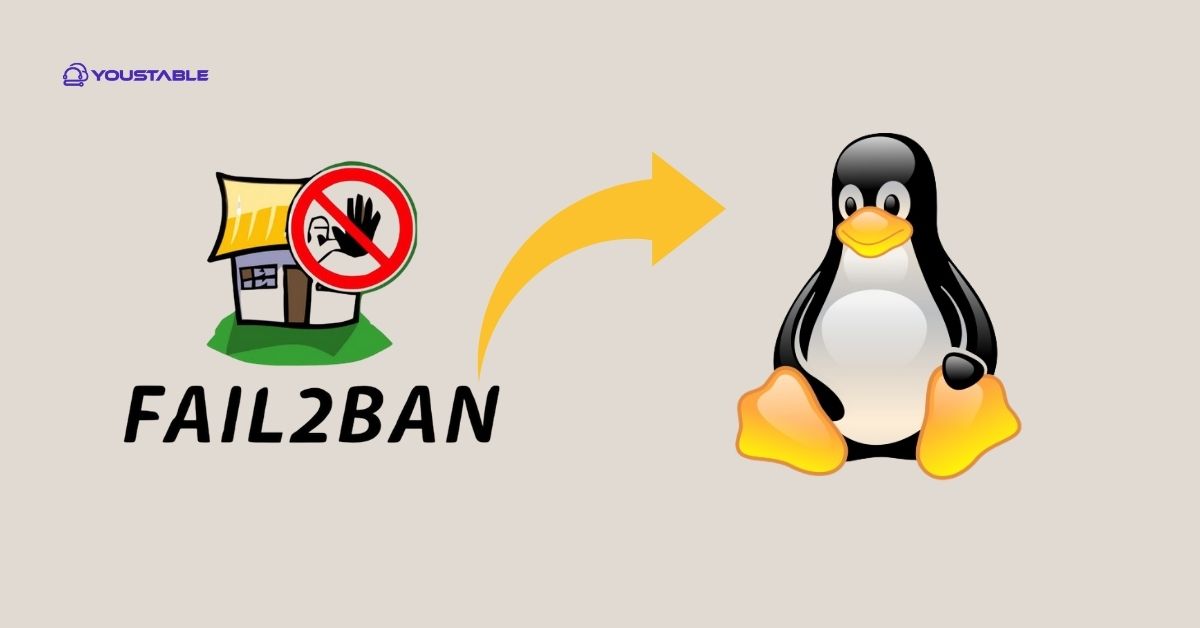Configure Fail2ban to protect your Linux server from brute-force attacks and unauthorized access attempts. Fail2ban is a powerful security tool that works by monitoring system logs and banning IPs that exhibit malicious behavior, such as repeated failed login attempts.
This article will guide you through the process of installing, configuring, and managing Fail2ban on your Linux server.
What is Fail2ban?

Fail2ban is a simple yet effective intrusion prevention software that helps secure Linux servers. It scans log files for potential signs of brute-force attacks and blocks the offending IP addresses by modifying firewall rules. The main benefit of Fail2ban is its ability to automatically detect and react to unauthorized access attempts, keeping your server protected without manual intervention.
Prerequisites
Before proceeding with the installation and configuration of Fail2ban, make sure you meet the following requirements:
- A Linux server running Ubuntu, Debian, or CentOS.
- Root or sudo privileges on the server.
- Terminal or SSH access to the server.
Install Fail2ban
Before configuring, you need to install Fail2ban on your Linux distribution.
Update System Packages
It is always a good idea to ensure your server is up to date before installing any new software. To update the package list and upgrade existing packages, run the following commands depending on your Linux distribution:
- For Ubuntu/Debian:
sudo apt update && sudo apt upgrade- For CentOS/RHEL:
sudo yum updateInstalling Fail2ban
After ensuring that your system is updated, proceed with installing Fail2ban:
- For Ubuntu/Debian:
sudo apt install fail2ban- For CentOS/RHEL:
sudo yum install fail2banVerifying Installation
To confirm that Fail2ban was successfully installed, run the following command to check its status:
sudo systemctl status fail2banThis will show whether the Fail2ban service is active and running.
Configuring Fail2ban
Default Configuration Files
Fail2ban uses several configuration files to control its behavior. The main configuration files you will work with are:
- fail2ban.conf: The core configuration file.
- jail.conf: Contains the default jail definitions for various services (SSH, HTTP, etc.).
To preserve custom settings during updates, you should never edit jail.conf directly. Instead, copy it to jail.local:
sudo cp /etc/fail2ban/jail.conf /etc/fail2ban/jail.localNow, you can modify jail.local for your custom configurations.
Modify jail.local
To configure Fail2ban, open jail.local in a text editor:
sudo nano /etc/fail2ban/jail.localBasic Settings
The primary settings in jail.local control how Fail2ban behaves globally across the server. Here are some important settings:
- ignoreip: Trusted IP addresses that should never be banned.
ignoreip = 127.0.0.1/8 ::1This ensures that your server can always communicate with itself, even if it’s under attack.
- bantime: The duration (in seconds) for which an IP address is banned.
bantime = 3600 # 1 hour- findtime: The time window (in seconds) during which Fail2ban considers failed attempts for banning.
findtime = 600 # 10 minutes- maxretry: The number of failed login attempts allowed before an IP is banned.
maxretry = 5Configuring Jails for Specific Services
A “jail” is a configuration that defines how Fail2ban protects specific services like SSH, Apache, etc. In jail.local, you can configure the protection for each service.
- SSH Protection
The most common service to protect is SSH. Locate the [sshd] section in jail.local and enable it:
[sshd]
enabled = true
port = ssh
logpath = /var/log/auth.log
maxretry = 3This configuration protects SSH by banning any IP that fails 3 login attempts within 10 minutes.
- Other Services
You can also configure jails for other services like Apache, Nginx, FTP, etc. Simply find the relevant sections in jail.local and enable them.
Starting and Enabling Fail2ban
- Start the Fail2ban Service
Once you have configured Fail2ban, you can start the service with the following command:
sudo systemctl start fail2ban- Enable Fail2ban to Start at Boot
To ensure Fail2ban starts automatically on boot, run:
sudo systemctl enable fail2ban- Verify Fail2ban is Running
To check if Fail2ban is running correctly, use:
sudo systemctl status fail2banMonitoring and Managing Fail2ban
- Checking the Status of Jails
To view the status of Fail2ban jails, run:
sudo fail2ban-client statusThis command will list all active jails and their current status.
- Unbanning an IP
If you need to manually unban an IP address, use the following command:
sudo fail2ban-client set sshd unbanip <IP_ADDRESS>Replace <IP_ADDRESS> with the banned IP you wish to unblock.
- Viewing Logs
To monitor Fail2ban’s activities and examine banned IPs, check the logs:
sudo tail -f /var/log/fail2ban.logThis will show ongoing events and any bans being triggered.
- Testing the Configuration
You can test Fail2ban by simulating failed login attempts. For SSH, try logging in with an incorrect password several times from a different machine or using ssh to see if the IP is blocked.
Advanced Fail2ban Configurations
Custom Filters and Actions
Fail2ban allows you to create custom filters and actions. For example, if you’re running a custom service that isn’t supported by default, you can create a custom filter to match the log patterns for that service.
- Create a custom filter file under
/etc/fail2ban/filter.d/and define the regular expression that matches the log entries of the service.
Configuring Email Notifications
Fail2ban can send email notifications when an IP is banned. To enable this, add the following lines to jail.local:
destemail = youremail@example.com
action = %(action_mwl)sThis will send an email notification to youremail@example.com every time an IP is banned
Troubleshooting Fail2ban Issue
Common Issues
- Fail2ban Not Starting: Check the service logs and configuration files for errors.
- Jail Not Working: Ensure that the correct log paths and services are configured in
jail.local. - Fail2ban Not Banning IPs: Check your
maxretry,findtime, andbantimesettings to ensure they are configured correctly.
Logs and Debugging
You can debug specific jails by running:
sudo fail2ban-client status sshd
sudo fail2ban-client get sshd actionstartThese commands will give you more insight into why a particular jail might not be working as expected.
Conclusion
Fail2ban is a vital tool for securing your Linux server against brute-force attacks and unauthorized access. By following this guide, you can easily install, configure Fail2ban to protect services like SSH, HTTP, and more. Additionally, with advanced configurations like email notifications and custom actions, you can enhance Fail2ban’s functionality to meet your server’s specific needs.



